The UK’s Submarine Dismantling Project hopes to dismantle 27 of the UK’s de-fuelled, nuclear powered submarines after they have left service with the Royal Navy, but what’s the status of the project?
Jeremy Quin, Minister for Defence Procurement, said:
“As set out in the United Kingdom’s future nuclear deterrent: the 2020 update to Parliament, we continue to develop the submarine dismantling techniques necessary to meet all safety and sustainability standards and establish the long-term solution that provides best value for the taxpayer. Our commitment to the safe, secure, environmentally sound and cost-effective defueling and dismantling of all our decommissioned nuclear submarines as soon as practicably possible remains undiminished.
A demonstrator submarine is being used to define and refine the dismantling process. At Rosyth, initial dismantling, through the removal of low-level radioactive waste from the first two submarines, Swiftsure and Resolution, has been successfully and safely completed. As the unique approach is developed, work continues with the removal of low-level radioactive waste from a third submarine, Revenge. We expect to have a fully developed process for steady state submarine dismantling ready by 2026. As the demonstrator programme progresses, the outcomes will provide more certainty in the future costs to dismantle the Devonport-based submarines. It is not MoD policy to pre-announce the funding of its projects for reasons of protecting commercial interests.”
How are the Ministry of Defence undertaking the dismantling?
UK submarines are powered by nuclear reactors. During submarine operations, nuclear reactions cause radioactive substances to be generated in the pipework and components within the reactor compartment. This requires managing after the submarine leaves service. While our submarines are being stored, waiting to be defueled and then dismantled, they pose no additional safety risk to workers or members of the public.
“They undergo an annual survey and maintenance programme and a more in-depth survey and maintenance regime in nuclear-licensed docks, to preserve and test the systems as well as ensure submarine hull integrity. Once the nuclear fuel is removed and transported to Sellafield for storage the submarine can formally enter the SDP.”


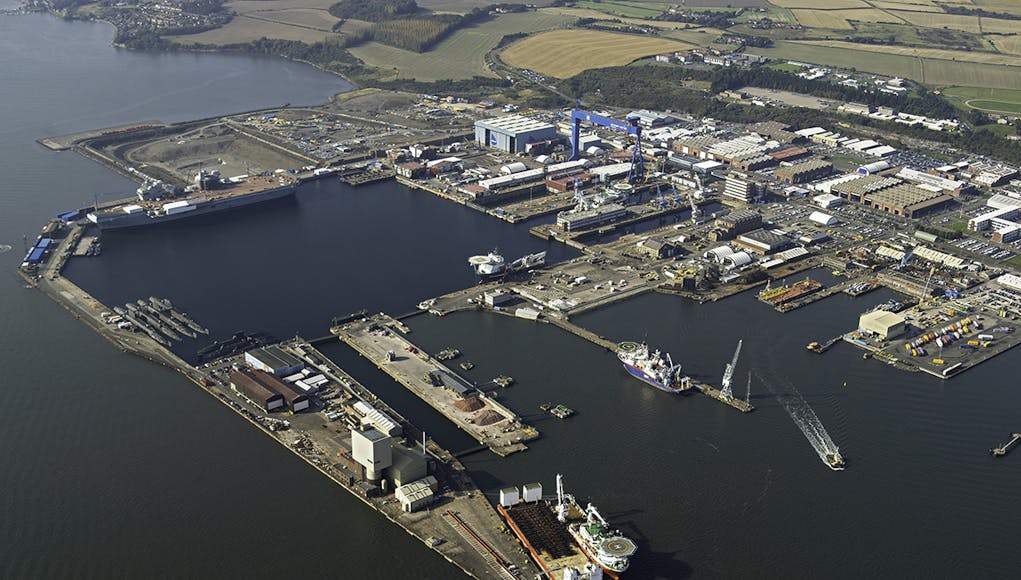
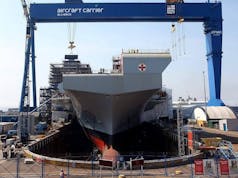
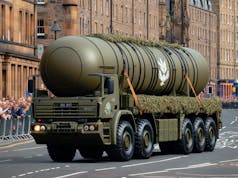
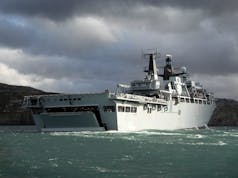
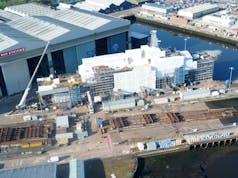
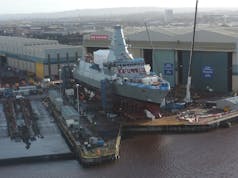

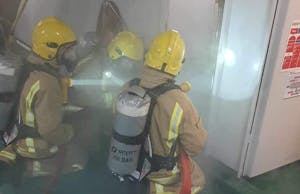









That’ll be a lot of multi-waste transiting the Cumbrian Coast line. Is it fit for purpose in terms of signalling and safety?
Good question. That’s my area of work, but no idea regards that line.
There was a piece on signalling in Modern Railways 3 months back(?) which seem like the solution for this line, however, the fly in ointment is the track – limited to 60mph, so capacity would be limited not forgetting we have several single line sections to contend with as well.
Does it really matter that the line is limited to 60 MPH. I would think transportation was more about “slow, steady and safe”. Its not like they would be rushing for a critical meeting.
Nuclear fuel has been moved by rail for many years. Crash tests are probably on internet.
Yes dear. Thank you for your contribution.
It was about capacity…
The amount of waste will be dependent on the rate of dismantling. I believe that this will take quite some time if my experience on Hartlepool nuclear power station is anything to go by. Most is carried out remotely and it’s very slow and safe. The continuous checkpoints on the method statements for removing a single bolt or stud bolt would frustrate most none nuclear engineers. The items are stored in holding tanks until a container load is available it is then moved to Sellafield if it is deamed safe enough to be moved. That may be some time.
They have been transporting waste from Hartlepool nuclear power station to Sellafield via Newcastle – Carlisle and the West coast line for decades. Never any problems reported. Usually one container and two Deltic locos.
Again, it is not about safety, it is about capacity.
Good to hear that Deltics are back in action…
(Don’t bite).
So of the 17 boats awaiting disposal none have been disposed of despite the oldest having had sat there for 35 years.
The ‘hotter’ radioactive machinery is, the harder it becomes to handle and dispose of. Leaving these vessels in a safe state while they cool down will ease disposal and save money.
The most common sense explanation I have read in the subject so far.
There is no particular reason to rush the disposal.
As you say, there is decay to half life.
That said, some of the isotopes have very, very long half lives.
The big problem is that there is no big repository to put the big lumps into whole. Which was plan A.
Plan B is to chop them up and pack the hottest stuff down real small. Which, whilst technically clever, is not as simple and cheap as simply sealing up the kettle compartment and putting it into long term deep storage.
Trouble is some of those isotopes have half lives in the 10,000 of years. Nickel 59 for instance has a half live of 75,000 years so it’s essentially going to need secure storage for the rest of human existence. A trafalgar will generate around 50 ton of intermediated level waste, which is the big problem as we don’t as yet have a National permanent storage solution ( which we need to find, but as yet geo studies have not found the right place). But to put in in context every nuclear submarine this county has ever built will only generate… Read more »
And that’s a half life, in other words half as dengerous after 10k years, but still very dangerous.
Disposable policy seems to be a bit like fly tipping to me…..just pop em over there and leave it to the next lot to sort out.
What the US and Russians do is remove the nuclear fuel and then bury the reactor compartments in mass graves.
not really much else you can do with reactors, half life’s being what they are.
classic example, a British army mark 3 marching compass will stay a radiologic hazard for a few more thousand years. Still a great compass even if a bit glowing in the dark.
We decommissioned our first nuclear sub in 1980 and by 2026 we should have a workable process to scrap them all. HMS Dreadnought was laid down in 1959 and someone at that point must have asked what the disposal process would be at end of life. Maybe everyone was simply too excited.
If I had to run a paint drying competition, my money would be on the MOD winning!
Also, I believe the number is 21 subs not 27 in the article.
When HMS Dreadnought was laid down and Windscale was at full flow nobody was thinking about clean up. It was assumed that chemistry and physics would catch up and present new solutions. Unfortunately radioactive things stay, well, radioactive. And decommissioning is largely about mechanical removal of some bits. Where things have moved on a bit is how things are washed out and concentrated so that there are no large quantities of radioactive water/solvents to get rid of. This is done by chelating (combining) them with various other chemicals that can then be precipitated out or ion exchanged out of the… Read more »
21 at the moment, but I believe the scope of the project increases to 27 when taking into account the remaining T boats and four bombers currently in service.
In the early days of the nuclear industry they simply didnt know how persistent nuclear contamination of equipment and structures would be as they simply weren’t used to working with radioactive materials on that scale. The reactor the US used for the Manhatten project for example was simply loose bricks stacked in a honeycomb for air circulation, pile the fuel rods in the centre of it and simply raise and lower control rods with a crane.
Sellafield was a graphite block with holes for the rods. See the documentary about the accident and how people gave their lives to prevent a nuclear disaster. That tower never had any filters.
Sellafield was still an engineered structure and not a pile of bricks in a basement beneath Chicago Universities football pitch.
So we have
4 Resolution Class SSBNs
4 Trafalgar Class SSN with 3 more to join
6 Swiftsure Class SSN
2 Churchill Class SSN
2 Valiant Class SSN
1 Dreadnought Class SSN
to get rid of
3 Churchill class, Churchill, Conqueror and Courageous
Seems very accurate and these hulls arent really in the public eye and out of sight means out of mind . This will stay under the carpet well into the 2030s dare I suggest.
If they can defuel and clean up the left over radioactive parts I hope the preserve one of them. CONQUEROR maybe
Leave the Trafalgar class. They could be refuelled reconditioned and then handed over to Australia to face China. Must be quickest way to get a decent SSN into service?
No chance, they are knackered. It’s amazing they lasted this long. Submarines are not like surface ships. Pressure hulls can only take so many cycles.
The skimmers don’t last for ever either. They all end up broken and reinforced. The Type 21s were shattered by the South Atlantic in ’82. The towed array Leanders were broken at the end. The T42s and T22s all needed to be ‘strengthened. Nothing lasts and having seen Trenchant on the recent TV documentary, I don’t think anybody would fancy submerging for very long or very deep in Talent or Triumph.
I remember watching the Radiological safety teams checking Dreadnought from the basin dockside in the mid/late 80s when I was refitting Brum in Rosyth.
It was quite telling that the dockyard shitehawks never even went on or near it…the hull was still pristine black except for the white line at the water line to give an indication if the hull was flooding.
Are there any up to date photos of Rosyth showing the new frigate hall?
I meant to post a link earlier:
https://twitter.com/DefenceHQ/status/1441062801376567306
Puget Sound Naval Shipyard in Bremerton, WA has recycled over 100 sub hulls as well as a number of nuclear cruisers. Many lessons learned/innovations on how to seal the “package” as well as methods for cutting up the rest of the ships. Key to disposal is having a foundry/smelter that will take large pieces which saves dismantling costs. No other US yard does the complete disposal.
So just what has been the delay? Is it simply down to trying to find a suitable manner of disposing of them after being defuelled and laid up? Are they even defuelled, this says they are and aren’t.